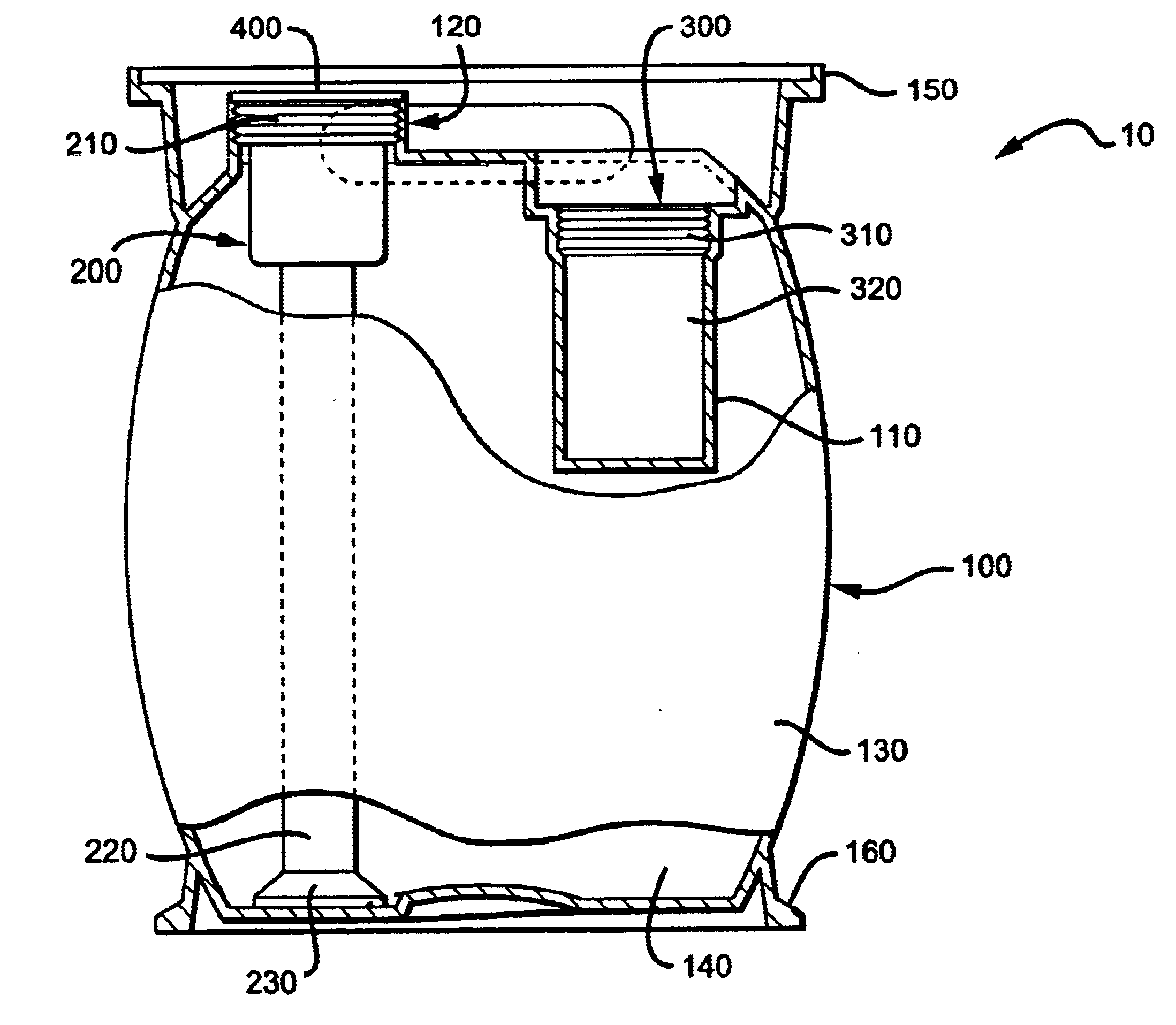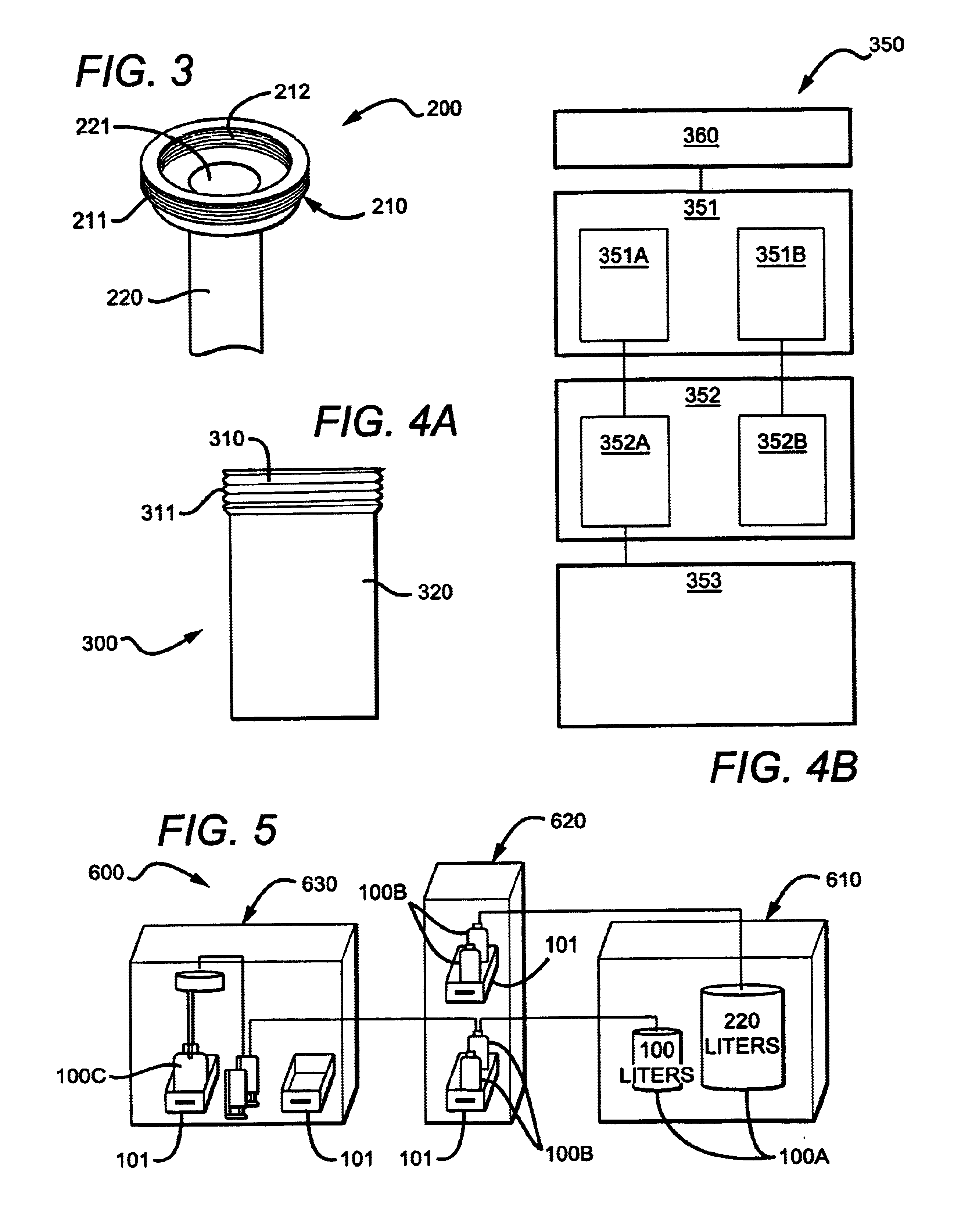Smart container for bulk delivery
a technology for bulk delivery and containers, applied in rigid containers, transportation and packaging, instruments, etc., can solve the problems of unsuitability for use, minor failures in storage containers or improper handling, and undesirable disposal of an entire container of costly materials, so as to facilitate the use of containers, reduce the chance of leakage or material contamination, and improve the effect of purity
- Summary
- Abstract
- Description
- Claims
- Application Information
AI Technical Summary
Benefits of technology
Problems solved by technology
Method used
Image
Examples
Embodiment Construction
Referring first to FIGS. 1 and 2, a smart container assembly 10 comprises storage container 100, a dip tube assembly 200, a monitoring assembly 300, and a dip tube seal cap 400. Container 100 comprises a monitoring assembly receiving cavity 110, a dip tube orifice 120, an outer wall 130 surrounding a storage cavity 140, top 150, and base 160. Dip tube assembly 200 comprises internally and externally threaded connector 210, dip tube 220, and inlet end 230. Monitoring assembly 300 comprises a top, threaded portion 310 and a bottom portion 320.
Storage cavity 140 of container 100 is filled with a fluid to be stored in the container via dip tube orifice 120 (which acts as a bunghole for the container), preferably while dip tube assembly 200 is absent. After filling the container, dip tube assembly 200 is used in conjunction with seal cap 400 to hermetically seal the container 100. When access to the fluid stored in container is necessary, seal cap 400 is removed while dip tube assembly 2...
PUM
 Login to View More
Login to View More Abstract
Description
Claims
Application Information
 Login to View More
Login to View More - R&D
- Intellectual Property
- Life Sciences
- Materials
- Tech Scout
- Unparalleled Data Quality
- Higher Quality Content
- 60% Fewer Hallucinations
Browse by: Latest US Patents, China's latest patents, Technical Efficacy Thesaurus, Application Domain, Technology Topic, Popular Technical Reports.
© 2025 PatSnap. All rights reserved.Legal|Privacy policy|Modern Slavery Act Transparency Statement|Sitemap|About US| Contact US: help@patsnap.com



